Senior design students study potential for Butte Mine Waste to be used in increasingly popular ‘green’ concrete
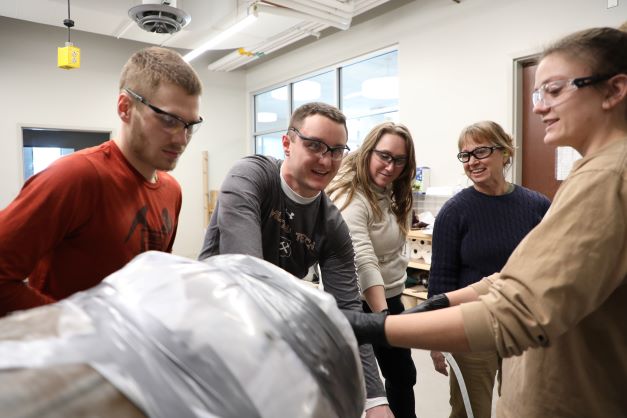
Five Montana Tech seniors have spent much of the past year working through a senior design project where they test whether or not waste mine tailings from the Yankee Doodle Tailings Pond could be used in a growing environmentally friendly industry.
“Green” concrete reduces the amount of cement needed by substituting other materials. In 2022 it was estimated that 7-8% of global carbon dioxide emissions originated from the production of cement. In the students’ experiment, they created concrete cylinders that contained different amounts of mine waste materials and injected carbon dioxide. In addition to reducing the amount of carbon dioxide produced via cement production, green concretes also have the added benefit of sequestering materials that are added.
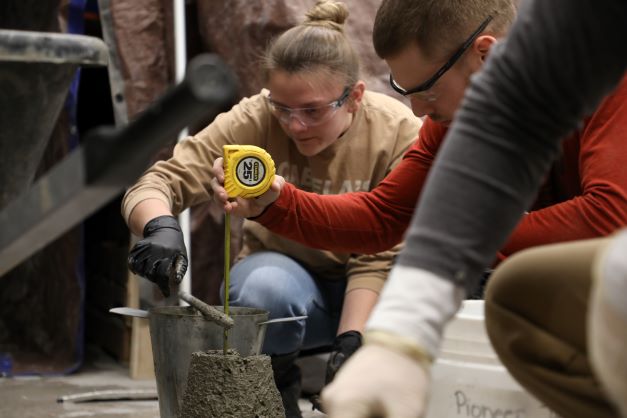
“Green concrete provides a method for recycling waste materials while reducing the overall price of concrete,” Civil Engineering Senior Gabriel Sims said. “After our experiments, we analyzed multiple waste materials and their costs to find that our final product could be cheaper for potential clients while also positively impacting the environment.”
In February 2023, New Jersey became the first state in the U.S. to offer businesses tax credits if they meet certain carbon offsets in concrete. Expert Market Research, a Wyoming- based market research company, estimates the global green concrete market in 2022 was valued at $6.31 billion, with the market forecast to grow to $11.45 billion by 2028.
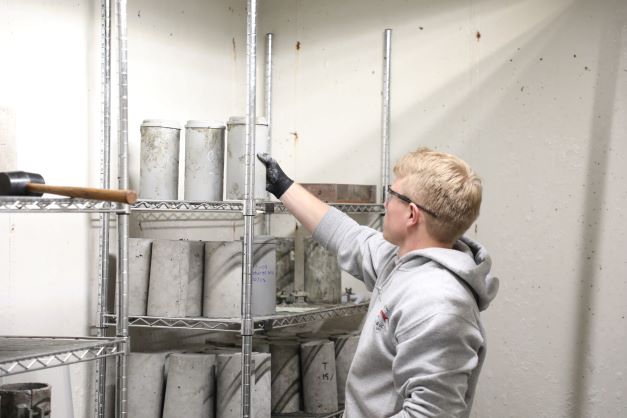
The students planned their experiment in the fall, and began work on mixing the concrete and curing it for three weeks at a time in the spring. They then put pressure on the concrete to see how it withstands pressure.
“The Montana Tech capstone course provides students the opportunity to choose a real-world problem, work with other disciplines and get their hands into the build,” Environmental Engineering Associate Professor Robin Bullock said. “Students learn project management, engineering design and how to generate multiple product values. Here they have not only beneficially reused waste material, but they have also reduced the product cost to a customer and significantly reduced greenhouse gas emissions. Looking beyond the individual task to see greater value in a project makes for a great future engineer!”
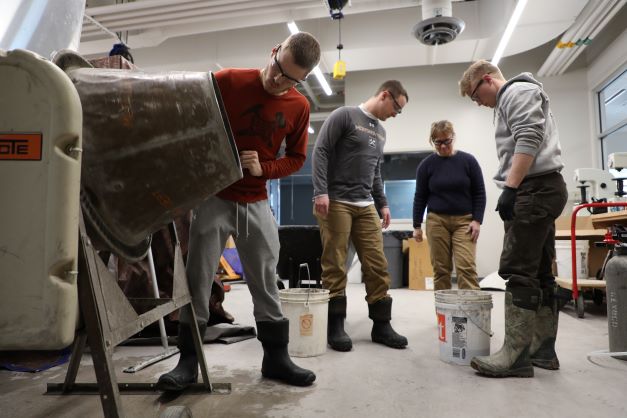
Learning to work collaboratively was a major part of the project.
“Throughout this project, there have been several small challenges that our group has faced, from figuring out how to mix designs correctly to figuring out what waste streams to use,” said Civil Engineering Senior Connor Johnson, of Whitehall. “However, I would say the greatest challenge was learning how to work as a team with people from a different engineering department and coordinating final decisions that work for everyone.”
Colton Grange, a senior civil engineering student from Philipsburg, said the course will be helpful after graduation.
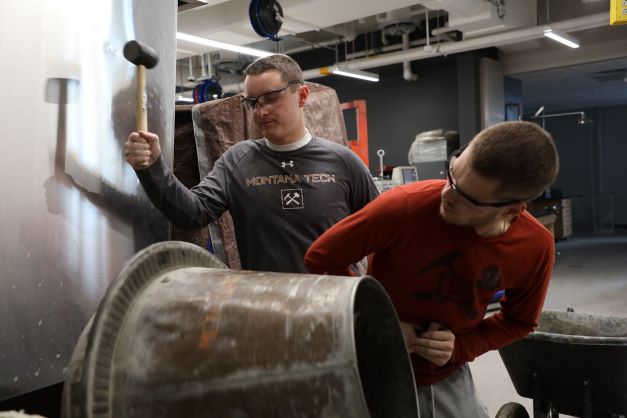
“This project has been excellent for the personal and professional growth of all of us,” Grange said. “The biggest influence it will have on our future is the amount of team learning and communication we all picked up while working together to complete this experiment. We have done a great job working together as a team, along with mentor help, for the last six months. Working on one idea for what will be eight months after it is all said and done will be irreplaceable once we graduate and move on to bigger and better things. In school, students work on topics for what might be a month at the longest. We, as a team, will be able to say that we successfully brainstormed, collaborated, tested, modified, and completed a potentially very meaningful project that took our entire senior year to put together.”
Nevada Strandberg, an Environmental Engineering senior from Helena, said the major endeavor was worth all the effort.
“Working as a group of future civil engineers and environmental engineers made the project rewarding,” Strandberg said. “There were parts of the project that the other department did not know how to do, and we were able to learn from each other. It really helps everyone realize how important communication is and how working as a team is crucial. The countless hours of research, planning, and developing different concrete designs, and in the end having a usable concrete product made the challenging work worth it. A major plus is that the concrete has a good environmental impact by utilizing wastes from mining and groundwater treatment that Butte has an excess of, but no use for.”
Shyla Wesely, a senior Environmental Engineering student from Glasgow, encouraged students to take the senior design class as an opportunity to explore the unexpected.
“Senior Design is a course every Montana Tech Student must take to graduate,” Wesely said. “At the beginning, every professor and department head will tell you to ‘choose something that interests you!’ And of course, that is great advice. But if you, during your last year, still maintain a sense of wonder, I encourage students to take a chance on any study that even remotely catches your eye. Green Concrete was not my first or even second choice. And now, Grad school is looking appealing so I can continue this study. College is the last place where your whims, even if they fail, have a safety net. So, use it!”